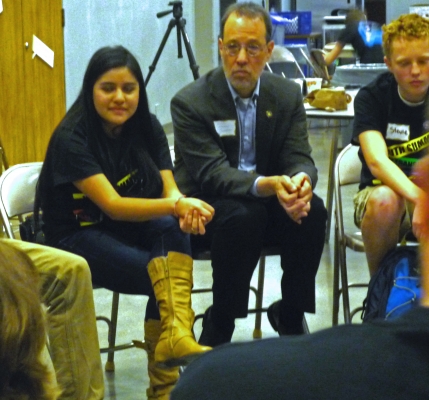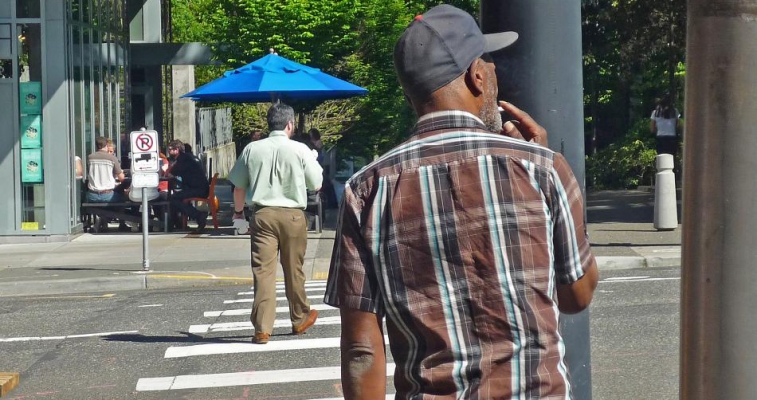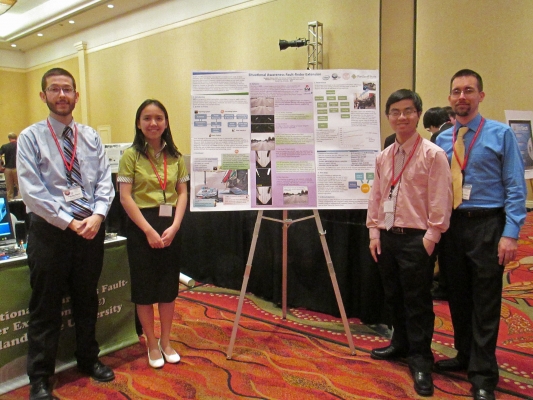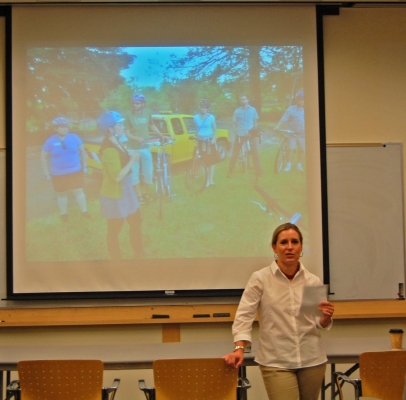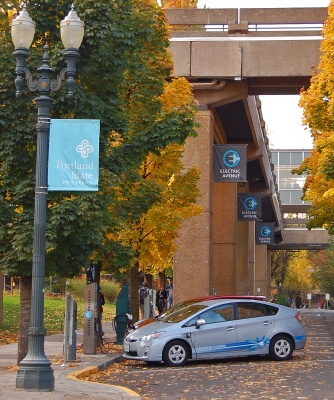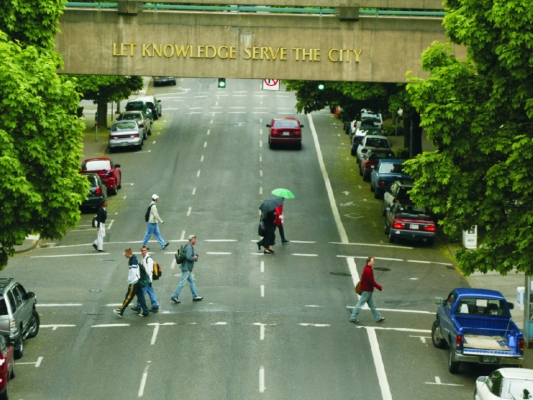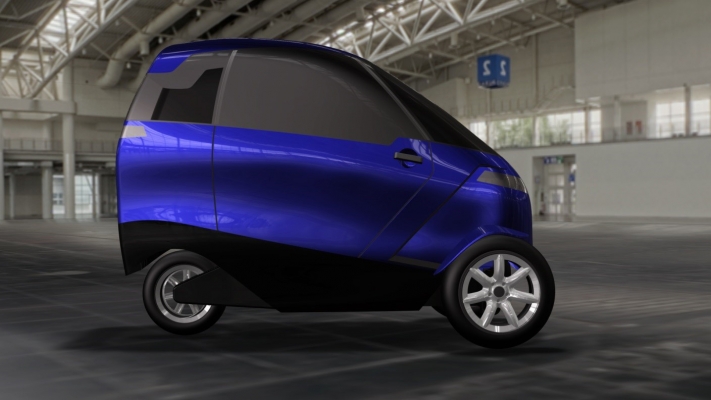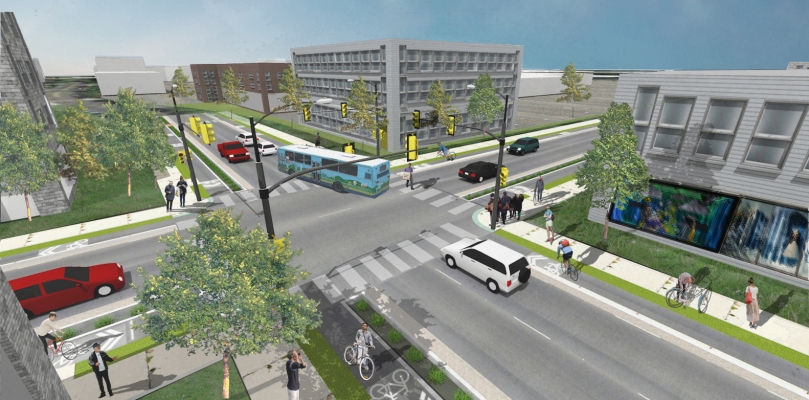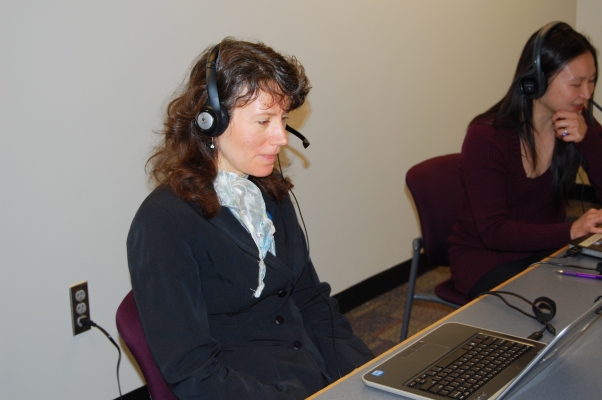In a pilot study funded by the NITC Small Starts program, researchers explored whether drivers behave differently toward pedestrians waiting to use a crosswalk based on the pedestrian’s race. The study – the first examining the effects of race on pedestrian crossing experiences – found that black pedestrians were passed by twice as many cars and waited nearly a third longer to cross than white pedestrians.
Minorities are disproportionately represented among pedestrian fatalities in the United States. The Center for Disease Control reported in 2013 that in the first decade of this century, the fatality rates for black and Hispanic men were twice as high as they were for white men.
Researchers Kimberly Barsamian Kahn and Tara Goddard of Portland State University, and Arlie Adkins, of the University of Arizona, hypothesized that if minority pedestrians experience more delay at crosswalks, they might take greater risks when crossing – risks that could contribute to the disparate fatality rates.
Kahn, an assistant professor of social psychology, studies contemporary forms of racial bias that are hidden within society. Working with Goddard and Adkins, who were interested in the social equity impacts of transportation, Kahn put together a controlled field experiment to measure...
OTREC and the Initiative for Bicycle and Pedestrian Innovation (IBPI) are proud to announce the winners of the 2014 IBPI scholarships.
Portland State University students Liz Kaster, Bryan Blanc, and Gena Gastaldi have each been awarded one of three scholarship opportunities from IBPI, made possible through the generous donations of Rex Burkholder and Lydia Rich; Alta Planning + Design, and DKS.
The Rex Burkholder and Lydia Rich scholarship supports a graduate student who intends to pursue a career related to bicycle and pedestrian transportation. Liz Kaster, a second-year Master of Urban and Regional Planning (MURP) student, was awarded the Alta Planning & Design scholarship through IBPI last year, and this year she has been selected for the Burkholder/Rich scholarship.
As a recipient of the Burkholder/Rich scholarship, Kaster will work with a faculty member to develop and carry out a short-term project on a topic that can immediately help practitioners plan for more bicycle- and pedestrian-friendly communities.
This year’s winner of the Alta Planning + Design scholarship is Gena Gastaldi, a MURP student with a focus on active transportation and urban design. The Alta Scholarship supports a graduate student who is highly motivated...
Read moreWith the emergence of electric vehicles (EVs) as an environmentally friendly alternative to the internal combustion engine, OTREC researcher Robert Bass decided to investigate some of the uncharted effects of their growing prevalence.
Bass is interested in measuring and understanding the impacts that electric vehicle charging stations have on their cities’ power distribution systems.
Electric Avenue, located on the Portland State University campus where Bass is an associate professor, is the perfect research opportunity: a row of EV charging stations along Southwest Montgomery Street, between Broadway and Sixth Avenue in downtown Portland, Ore.
Launched in August 2011 as a joint project by Portland General Electric, PSU and the City of Portland, Electric Avenue is intended as a research platform for understanding the impact EVs have within the larger context of the city.
Nonlinear loads such as EV chargers can introduce power quality issues to a city’s electricity distribution system. Bass, with PSU undergraduate student Nicole Zimmerman, set out to measure the power quality effects of EV chargers along Electric Avenue.
Power quality manifests in several ways; for this study, the researchers focused...
Read moreOTREC research from Portland State University has developed a new method of travel demand modeling for pedestrian trips.
Transportation professionals use travel demand modeling to forecast how many people will be using a given portion of the transportation infrastructure. This is typically done using a four-step process, the first step of which relies upon a basic unit known as a transportation analysis zone, or TAZ.
A TAZ is a relatively coarse unit of space that can vary in size depending on planners’ needs; typically it encompasses somewhere around 3,000 residents.
Planners started using TAZs in the 1950s, on mainframe computers with limited capabilities, for guidance in making highway investment decisions. As transportation modeling practice has evolved, computers are capable of processing more data and models are being increasingly relied upon to answer more complex questions.
Despite growing investment in infrastructure that supports active forms of travel, existing modeling tools often poorly represent the nuances of the pedestrian environment. The project’s principal investigator, Kelly Clifton of Portland State University, explores ways to improve upon the modeling tools currently in existence.
... Read moreOTREC researchers and students from the Oregon Institute of Technology have teamed up with Green Lite Motors to test a next-generation hybrid car.
Green Lite Motors, a clean-tech start-up company based in Portland, Ore., has developed a small, three-wheeled, gas-electric hybrid vehicle based on the platform of a Suzuki Burgman scooter.
The vehicle is classed as a motorcycle, and has all the advantages of the smaller vehicle — it doesn’t take up a whole parking space, and it gives off fewer emissions — but it also has an advanced roll-cage design, giving it the safety and comfort of a standard passenger car. It has two wheels in the front, one in the back, and mileage possibilities greater than 100 miles per gallon.
The target market areas for this two-passenger vehicle are urban commute zones, where large numbers of people travel daily from suburban homes to city-based professions.
The tiny hybrid car could change the commuting experience, minimizing gas expenditure and cutting down the time people spend looking for parking.
Green Lite has developed two prototypes.
The first...
Read moreMore attractive streetscapes often lead to an increase in private development, but it can be difficult to visualize future results when they are just potential.
An OTREC Small Starts research project has developed a workflow to create streetscape illustrations for Metro, the regional government for the Portland, Ore. metropolitan area.
Data-driven illustrations that depict planning scenarios are an effective way to communicate to decision makers the results that their investment could bring about. In line with the Oregon Legislature’s greenhouse gas reduction targets, Metro launched the Climate Smart Communities Scenarios Project in 2011.
As part of this project, Metro has developed investment scenarios designed to reduce light vehicle carbon emissions. These scenarios represent potential improvements to urban centers, corridors and employment areas. Improvements such as providing services and shopping near where people live, expanding transit service, managing parking, and providing safer routes for walking and biking can increase transit ridership, support more active travel modes, and thereby reduce pollution.
Principal Investigator Nancy Cheng of the University of Oregon worked with Metro to create a streamlined process for...
Read moreThe Initiative for Bicycle and Pedestrian Innovation hosted its first Webinar Feb. 27, with OTREC researcher Krista Nordback providing an overview of bicycle and pedestrian count programs for the 250-plus registered participants.
The Webinar marks an expansion of IBPI’s professional development offerings, which now also include a sustainable transportation study-abroad program and a wider selection of workshops geared toward transportation professionals and university instructors. Webinar participants were eligible to receive continuing education credits, new this year for IBPI live Webinars and in-person workshops.
While the title of the Webinar, “We are Traffic: Creating Robust Bicycle and Pedestrian Count Programs,” asserts a place for walking and bicycling in traffic discussions, Nordback began with a question: If we really believe that bicycling and walking are modes of traffic, how is that going to change how we measure those modes?
Nordback outlined the Federal Highway Administration’s Traffic Monitoring Guide, published last year. She covered why counting and understanding bicycle and pedestrian...
Read more
